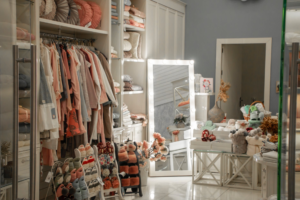You may have heard about the study of retail design; the science of supermarkets and shelving. For years, it has been a recognised discipline, with many tidbits of information making their way from research papers and into public awareness.
One common example is that high-frequency sale items, such as milk in supermarkets, are tactically placed at the rear of the store to ensure many customers will travel through the store, being likely to add extra items to their baskets along the way.
While the idea that supermarket managers are craftily designing their stores entirely on such behavioural traits is interesting, it isn’t always true. In fact, in this example, many stores design their dairy sections near the rear of the store because they require extensive refrigeration. The same reason goes for hot and frozen goods. Not only do they typically require facilities and equipment that necessitate their location but they also restrict space. Freestanding shelves can be stacked from all sides, but a refrigerator only opens one way, making it logical to install them around the outer perimeter of a store.

Influencing Sales
However, that isn’t to eliminate sociologically influenced retail design entirely. Even those who may not recognise the name Paco Underhill will know (or have experienced) his theories pertaining to store design. His work has given many general rules to store design and, while some may no longer apply in modern shopping culture, he inextricably demonstrated that the way you arrange your store furniture and shop shelving can have a significant impact on sales.
Decompression Zone
Dedicating an introductory section of your store to decompression is one of Underhill’s most well-sustained and provenly beneficial techniques. This space allows customers transitioning from the outdoors to orient themselves and acclimatise to the store’s atmosphere. Without this space, a shopper’s first impression can be negative, feeling overwhelmed by the urgency to keep moving.
It may seem an ideal space to advertise sales or showcase new products, however, not only will these add to potential visual overloading but they will also be more quickly forgotten as customers move beyond their display to get into the store. Underhill states that customers seldom notice objects immediately inside a shop’s doorway.
Comfort In Space
In the wake of an international pandemic, most shoppers will be well-aware of the potential value space has. Long before the COVID-19 outbreak, however, space was still a huge priority to customers who would feel more comfortable with a greater personal area within which to browse. This sensation is epitomised by what Underhill dubbed the ‘butt-brush effect’, telling that customers not only feel uncomfortable when touched from behind but will also lose the comfort to shop entirely.
It may seem intuitive to fill your floor with stock, giving customers as much variety to browse as possible. In fact, it is preferable to offer more room and wider walkways for customer traffic to flow. This doesn’t mean that fewer items of stock need to be placed on the shop floor. The answer lies in modular shelving, such as slatwall panels, which allow stores to safely and efficiently display stock vertically without compromising browsing space.
Modern Shopping
While the credence of these rules general persists, our modern shopping world offers many exceptions. Some stores have thrived in low-lighting and others restrict customers from touching products as a way of making their brand more enticing. So, while it can be useful to assimilate theory into your store, where you put the milk ultimately comes down to your individual brand, shop, and creativity.



